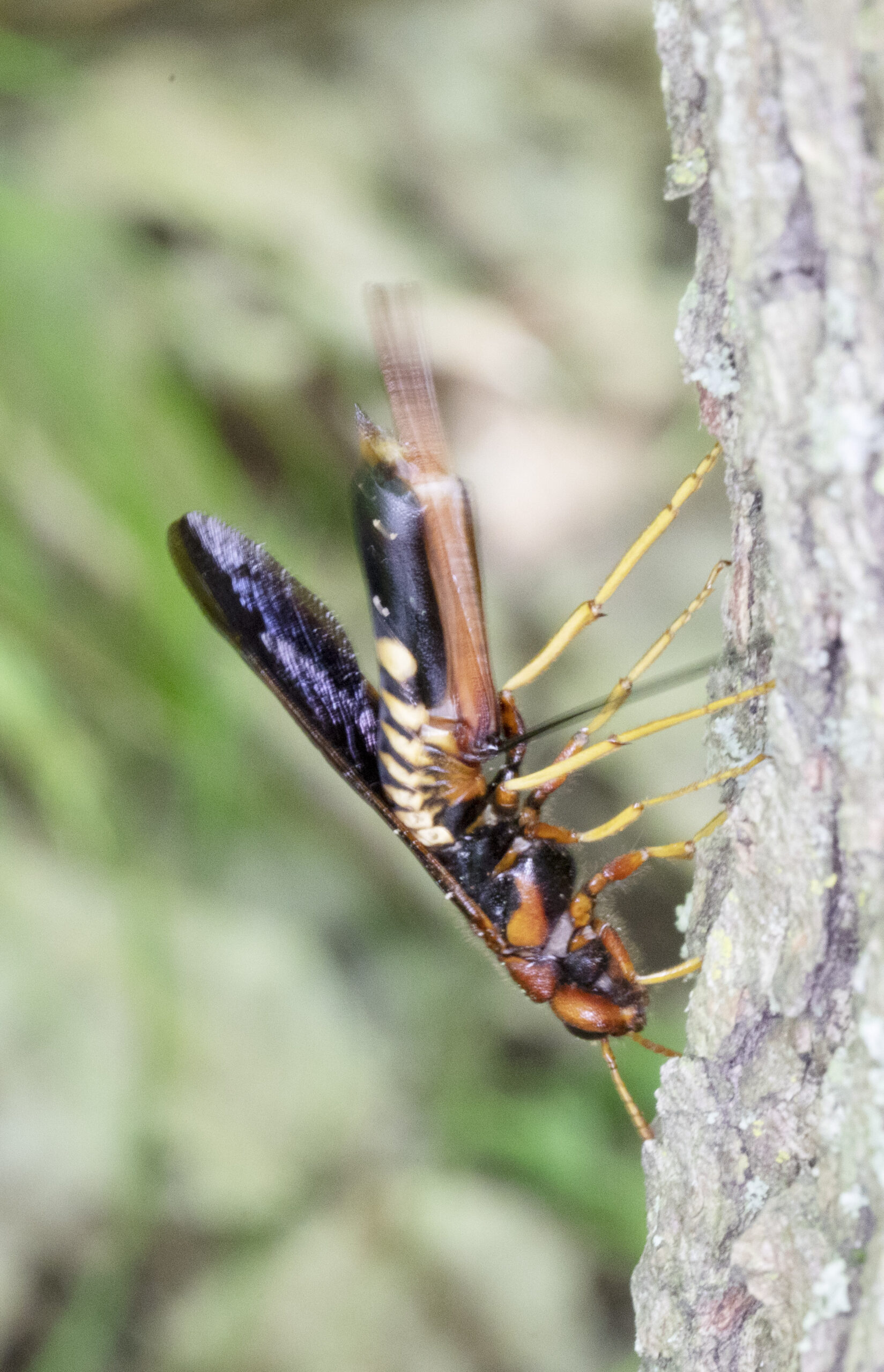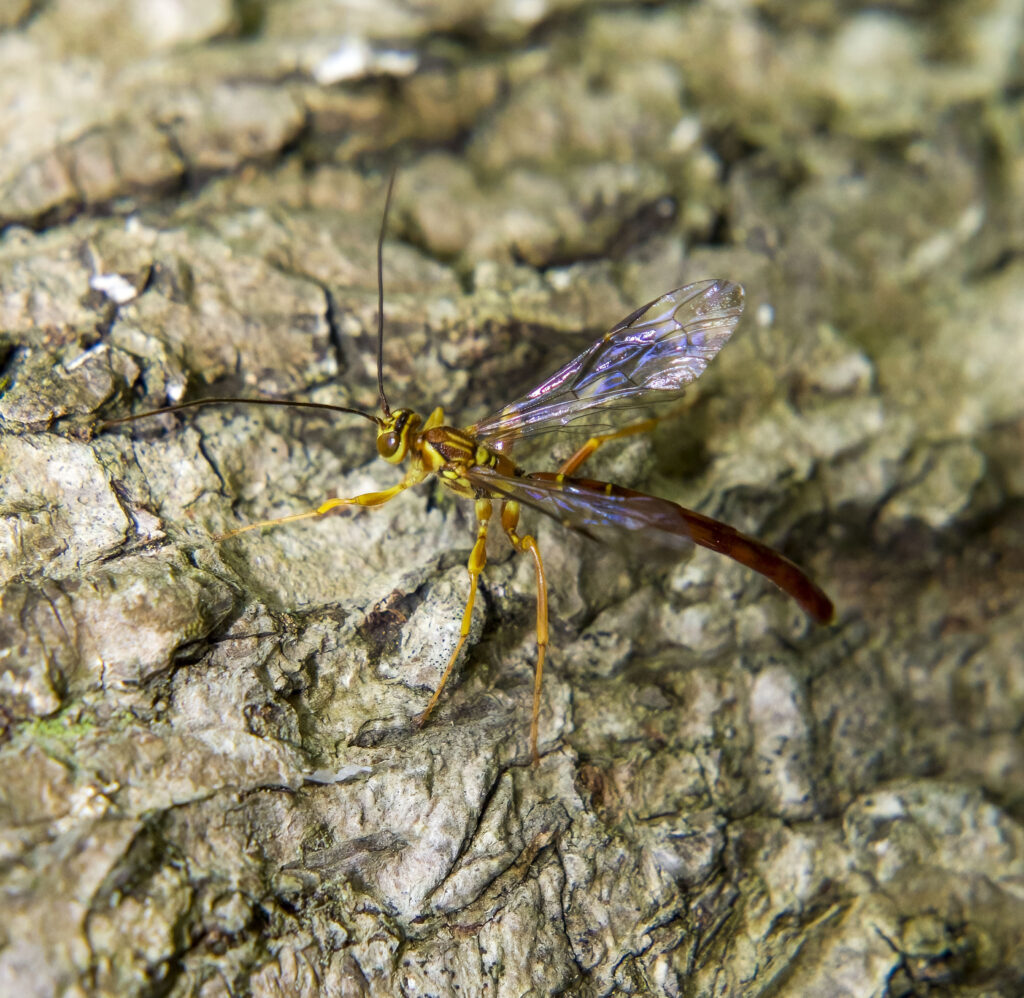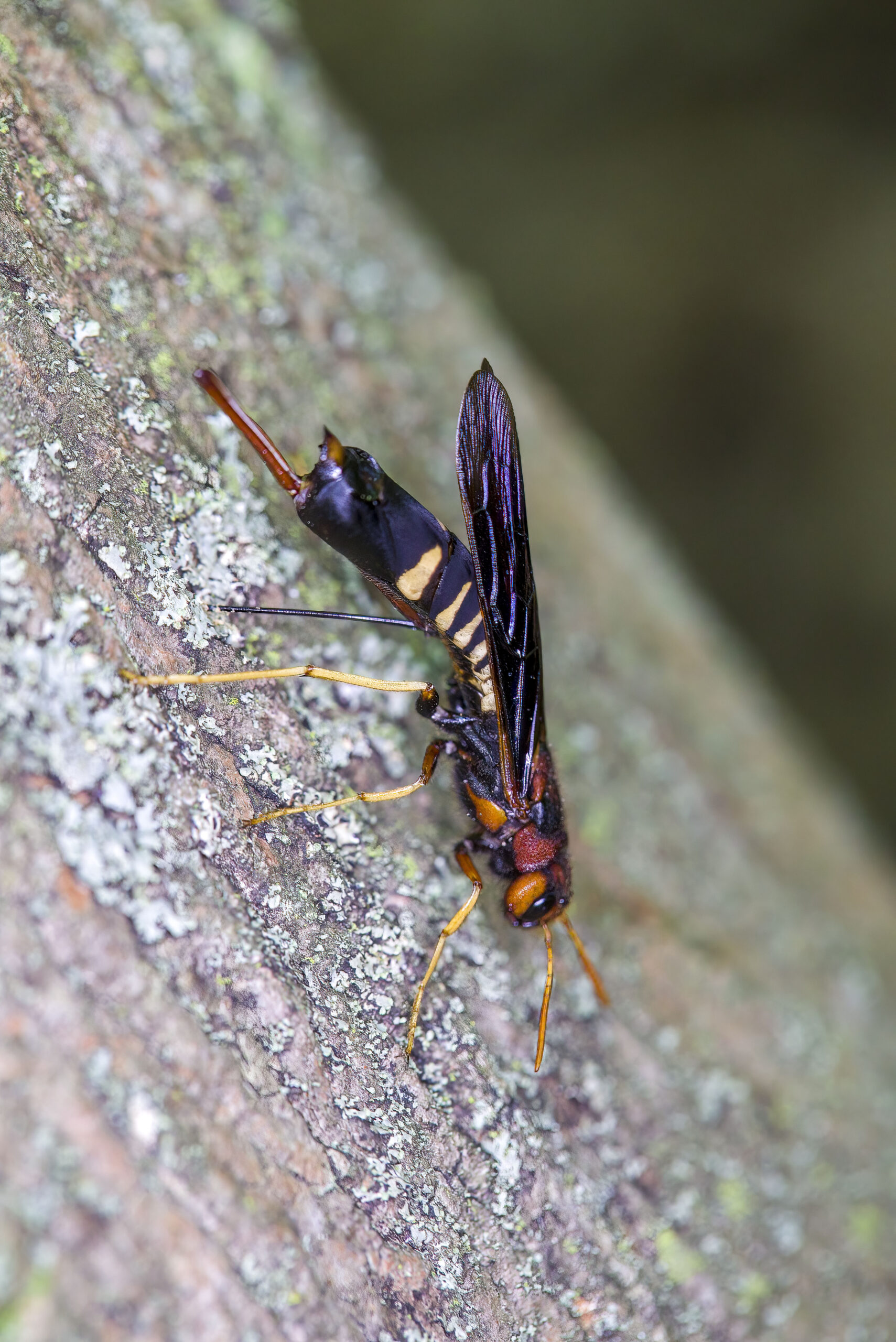Many insects are famous for their incredible evolutionary adaptations — from the raptorial forelegs of the praying mantis to the incredible camouflage of the walking stick, many insects show amazing adaptations to their environment. The most fascinating may be the pigeon horntail (Tremex columba, also known as the pigeon tremex) which has evolved a complex piece of engineering: a drill-like ovipositor, which it uses to place its eggs directly into hardwood trees. It has also evolved a complex symbiotic relationship with a fungus that it both feeds on and cultivates.
COVER PHOTO: An adult female pigeon horntail (Tremex columba) in the process of drilling into a tree to lay her eggs. In the process of drilling, the horntail introduces a fungus that grows in the tree, providing a food source for the larva once it hatches.
As members of the order containing wasps and bees, one might think these insects need to be approached with caution. Despite their appearance, the pigeon horntail is harmless and safe to examine closely. The adult females are large (up to 5 cm) with brownish-orange heads, two pairs of brown wings, and the black and yellow striped abdomen typical of many wasps. Both males and females have what appears to be a stinger at the end of their abdomen, but this is just a harmless (albeit intimidating-looking) spine.
After mating, the females look for dead or diseased trees like maple, oak, or elm. It is on these trees that they show off their amazing drill-like egg-laying apparatus, the ovipositor. When not in use, the females keep the ovipositor in a sheath that resembles a tail. After locating a suitable tree, she unsheathes the ovipositor and pierces the bark of her chosen tree with its tip. She then drills into the wood by moving and tapping the ovipositor with her abdomen and bracing it against the sheath. You can see this in action in the video I took in Short Hills Provincial Park, which you can view here.
Once the females have drilled deep enough, they will deposit an egg in the tree. Horntail females have evolved special glands called mycangia, which store the white rot fungus Cerrena unicolor. During the drilling process, females introduce this fungus into the tree. The fungus grows and eventually provides a food source for newly hatched larvae. The fungus and the horntail share a mutualistic symbiotic relationship, as the success of one depends on the other — the larvae cannot survive without feeding on the fungus, and the fungus has an easier time growing in trees which have been pierced by the horntail’s ovipositor.
As female larvae feed, they collectfungal spores in special glands that form into mycangia after the larvae pupate. The larva feed for a year or longer, and then pupate over a span of three to five weeks; they emerge after chewing perfectly circular holes in their host tree as they seek out new mates to begin the cycle again.

While the pigeon tremex is dependent on both its drill and the fungus for survival, the fungus inadvertently serves as a beacon for a parasite also equipped with a drill: the giant ichneumon (Megarhyssa spp.)
Like the pigeon horntail, the giant ichneumon is an intimidating yet harmless member of the wasp family. Most giant ichneumon wasps have a predominantly black body with a yellow, brown, or black head and stripes on the abdomen. As their name suggests, they are quite large, with a slim body up to 5 cm and an equally long tail-like ovipositor.
The ichneumon’s ovipositor is another marvel of natural engineering — it consists of sheathes that move independently and provide the cutting force for penetrating wood. This unique adaptation has inspired innovations in surgical tools proposed for use on humans.

Research suggests that the giant ichneumon can detect Cerrena infections in wood, and, after locating a diseased tree, it pinpoints a horntail larva deep in the wood. Using its ovipositor, the ichneumon drills through the wood and deposits its eggs into the horntail larvae. The ichneumon larvae then have a safe home and an ample food supply, and emerge as adults after feeding for a year or more.
Since horntails usually target dead or already weakened wood, they do not usually have a major impact on the lumber industry. They are important in recycling the nutrients in dead or decaying wood. The giant ichneumon also serves to limit the potential damage that horntails might do to a forest.
Adult female horntails can be spotted on dead or decaying wood from late summer into fall, and they are hard to miss with their large size and striking colours. They can sometimes be found as winter approaches, still attached to the wood where they deposited their eggs. Their story is a fascinating tale of innovation and adaptation and I hope you’ll look for them next time you’re out for a hike.
Have you seen a horntail or a giant ichneumon wasp? What did you think about it? Email brad@niagaranature.ca. I’d love to hear your stories.
